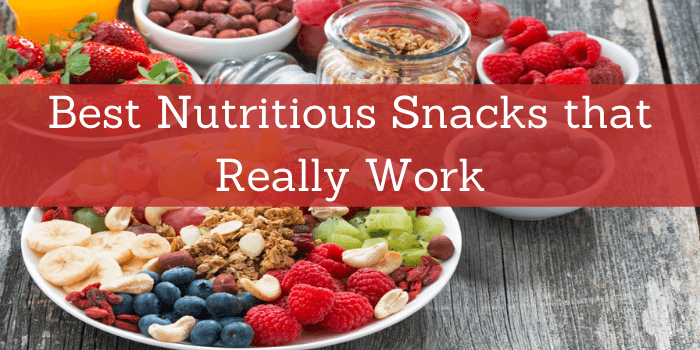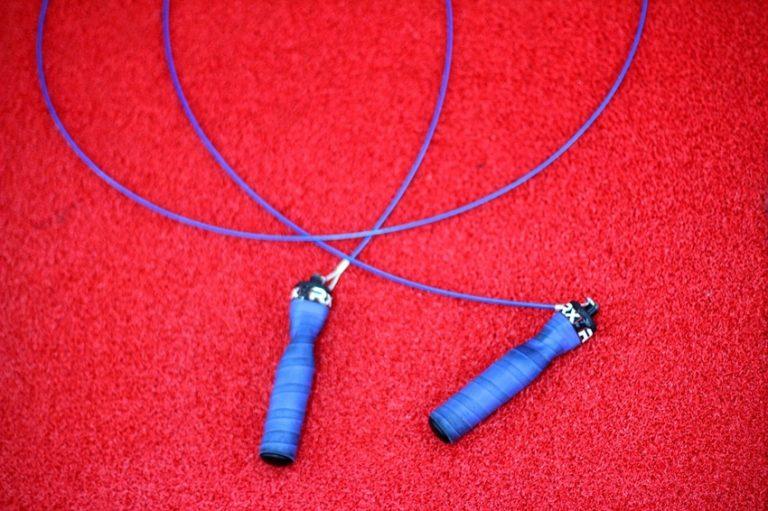Top 10 Best Nutritious Snacks that Really Work

June 28, 2025 by Robert Dowling
Snacks can be a nutritious part of your diet, but some people struggle to find healthy and affordable options. However, many processed “snack foods” are junk, and some “healthy snack foods” can be expensive! For example, “all natural” or fortified snack bars and single serving packages of nuts that you can buy at the store are healthy options, but these convenient options can be pricey.
Top 10 Best Nutritious Snacks that Really Work
So how can you include healthy snacks in your day while sticking to your budget?
Shop Smart –
The first step to helping yourself and family make nutritious snack choices at home is to buy healthy options at the grocery store! This takes a little planning can make a big difference. Although pre-packaged snacks can be convenient, we usually prefer non-packaged snacks because they are less expensive and offer more variety.
Food is Fuel –
Go for nutritional value when choosing snack foods. Ideally, a snack should include two food groups, a fruit or a vegetable, a whole grain, low fat dairy, and/or a lean protein. Try to include a vegetable or fruit every time you eat to help you hit your five or more servings a day! (Disclaimer: candy and cheese puffs do not fit into any food groups, so by my criteria, neither counts as a snack!)
Avoid Empty Calories –
Speaking of candy and cheese puffs, most “junk foods” are high in fat, sugar, salt, artificial colors and flavors, and they offer little, if any, nutritional benefit. While special treats can certainly be enjoyed sometimes, snacks should fuel your body with foods that offer benefits and help to fill in any nutritional gaps. So, don’t waste your money on super processed junk foods like store bought cake snacks, cookies, cheese curls, or candy. Instead, spend that same money on nutritious foods, and you will get more value for your money!
Stick to Basics –
No need to get complicated. Simply choose one food from one or two food groups for a nutritious snack. Here are some healthy examples: an apple or celery with 1-2 Tablespoons of peanut butter, cottage cheese and tomatoes, 1 oz cheese and whole grain crackers, edamame (it’s a complete protein!), carrots and hummus, celery with yogurt based dip, nuts and dried fruit, or homemade popcorn (it’s a whole grain!).
Be Creative –
Try making your own grab and go snacks at home! Some homemade snacks we have made recently include the Peanut Butter and Jelly Granola Bars and Chocolate Zucchini Muffins, both from “Good and Cheap: Eat Well on $4/Day” by Leanne Brown. The chocolate zucchini muffins include some nutritious foods (zucchini, oats, cocoa powder, egg, yogurt, cinnamon), but they will satisfy a sweet craving, too! Some other ideas: try making your own hummus to serve with veggies or whole grain bread, homemade ranch with non-fat yogurt as the base, and homemade trail mix.
Peanut Butter and Jelly Granola Bars
Pre-Package Your Own Snacks –
Pre-packaged snacks in individual portions can be a convenient time saver and can be a great way to control your portion size. However, extra packaging comes with a higher price. Try making your own single serve snacks by portioning nuts, veggies and dip, trail mix, popcorn, or tortilla chips and salsa in baggies or reusable containers. You can prep a bunch at once (would work well for nuts) or one at a time on the day you plan to eat the snack.
Chocolate Zucchini Muffins
Make the Healthy Choice the Easy Choice –
Once you have healthy snack foods in the house, work on making the healthy snacks the most convenient for you and your family to grab and eat. For example, keep a fruit basket on the counter, pre-bagged nuts and dried fruit in an easy to reach spot, low fat yogurt, and cut veggies and a healthy dip (hummus, salsa, guacamole, yogurt based ranch) in the fridge at eye level so adults and kids can easily grab a quick and healthy snack. Not having to do prep work when you are hungry, will make it easier for you and your family to choose healthier options. On a similar note, it is okay to have special treats in the house, but try to make them harder to access. We have a candy jar, for instance, but it is now so high in the cupboard that I need a step stool to get it down–that makes me think twice when a bowl of watermelon is already cut in the fridge.
Fresh Fruit for Easy Snacking!
Keep a Snack Stash –
Try to have keep some healthy snack options in your car, at your desk, or in your purse to help you avoid impulse buys when you are hungry and on the go. When hungry and unprepared, it is easy to give in and spend unplanned money eating out or on unhealthy food at a gas station or from a vending machine. Some convenient options are homemade granola bars, fruit and nut trail mix, or a bag of whole grain cereal. I keep instant oatmeal and tea bags at my desk as options to help tide me over if I’m really hungry, and I always bring a bottle of water with me on errands to prevent me from spending money due to thirst.
Are You Really Hungry?
When you’re deciding when, if, and on what you plan to snack, it’s important to ask yourself if you are really hungry. A dietitian friend once shared this tip with me: if you are not hungry enough to eat an apple or an orange, you are not really hungry. If you are not truly hungry, what are you experiencing instead–anger, excitement, boredom, stress, love, or are you eating out of habit? Remember that the purpose of eating is to fuel your body. However, eating is often associated with special occasions, and many people face struggles with emotional eating. If you are find you are eating when you are not really hungry, consider going for a walk, talking to a friend, or reading a book as another way to face the feeling you are experiencing.
Proper Portions –
Another way to help prevent spending extra money on healthy snacks is to make sure you are eating a proper serving size! Nuts are a great example. Nuts are nutritious and offer many health benefits, but it is easy to go overboard on portion size (one ounce or about 28 almonds is appropriate). When multiple servings are eaten by one person in one sitting, it leads to higher grocery costs, excess calories, and ultimately excess weight. Working to decrease portion sizes is an excellent way to reduce your grocery budget, lose excess weight, and improve your health!






